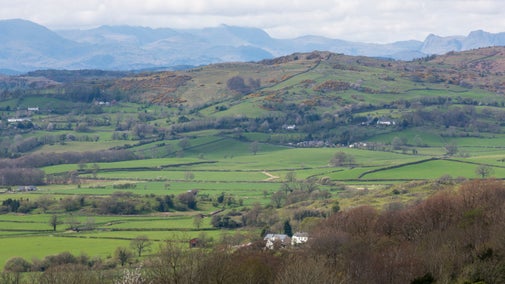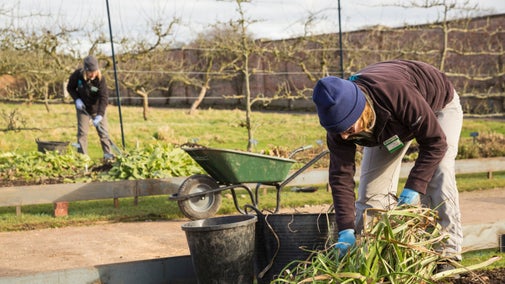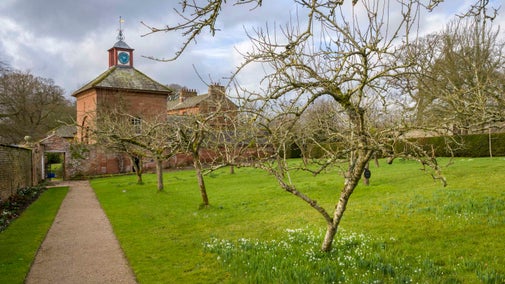
Discover more at Sizergh
Find out when Sizergh is open, how to get here, things to see and do and more.

Complex and varied, the garden at Sizergh tells the story of this family garden which has developed over 800 years. Explore the Rock Garden, Stumpery and Orchard: home to four national collections of hardy ferns, plus the Dutch Garden, Kitchen Garden and herbaceous border.
We’re proud of the work we do towards improving access for all at Sizergh – last March, the Holeslack Accessible Trail launched. Now, we’re turning our attention to the garden, and plans to reopen an early 19th century access ramp, known as Cecilia’s ramp. Cecilia Strickland suffered from rheumatism, and had to make use of a very early model of a wheelchair. With small wheels attached to a simple armed chair, she referred to her aid as a ‘chariot’, and arranged to have a ramp built into the grounds to allow her to continue accessing the gardens. Following Cecilia’s death in 1814, the ramp became a flowerbed, and now our plan is to reinstate it. If you’d like to hear more about the project, or you’re interested in supporting it, please get in touch at sizergh@nationaltrust.org.uk, or contact Dan Taylor on 07789 744842.

Find out when Sizergh is open, how to get here, things to see and do and more.
At Sizergh, we’re lucky to care for 675 hectares of soil - a living foundation that supports wildlife, farming and climate resilience. This year, discover a family trail and exhibition about the work we're doing with tenant farmers and how you can help.

Learn more about our plans to reopen an early 19th century access ramp, named after its original user Cecilia Strickland.

Connect with nature in Sizergh’s woodland, wetland and farmland. Find out about the wildlife you can spot while exploring this 1,600-acre estate.

Sizergh is a two pawprint rated place. Find out which areas of the estate you can explore with your dog.

Find out what to see in the House at Sizergh, including the Strickland family’s large collection of items spanning 26 generations and the renowned Elizabethan Inlaid Chamber.

Discover our gardeners’ top tips so you can make the most of your garden, plot or window box.

The Lakes is known for its dramatic, wild landscapes, but it's home to some intriguing gardens too. Explore castle grounds, a cottage garden that inspired Beatrix Potter, and more.
